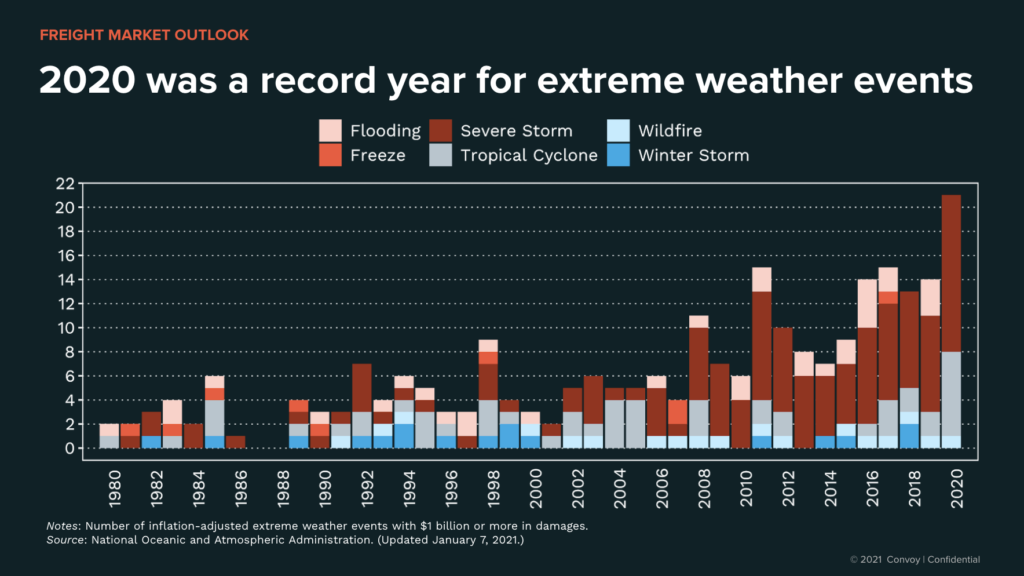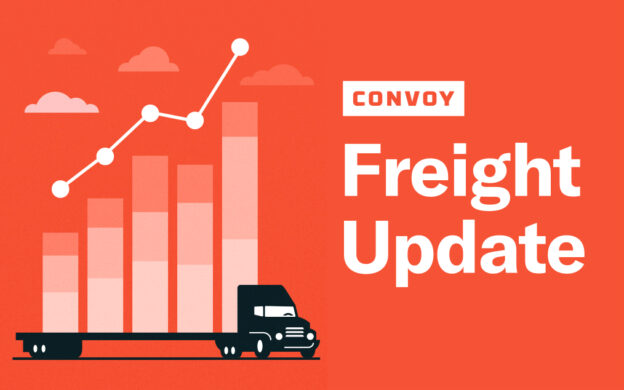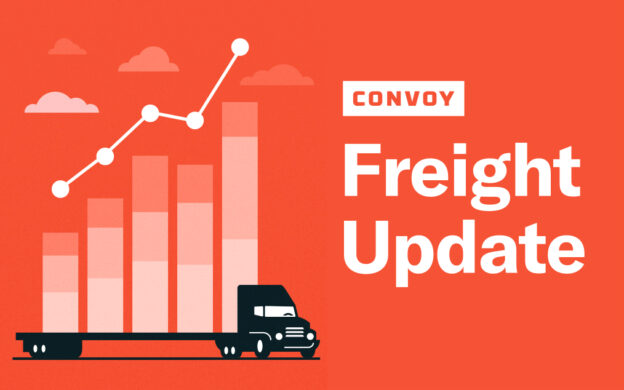First 2021 Hurricane Forecasts Predict Record Storms
Freight Research • Published on April 8, 2021
Colorado State University’s first forecasts for the 2021 Atlantic hurricane season anticipate an “above-average probability for major hurricanes making landfall along the continental U.S. coastline”. They anticipate 17 named storms (versus 12.1 historical average); this is even higher than last year’s April forecast, which anticipated 16 named storms but resulted in 30 named storms. Of those named storms, they anticipate eight will be hurricane strength. La Nina conditions in the equatorial Pacific that first appeared last year — and which tend to be associated with stronger than normal Atlantic hurricane seasons — are starting to weaken, but have persisted longer than anticipated. It’s hard to imagine two record hurricane seasons in a row, but that is clearly a possibility according to today’s forecast.
Every single mile of the U.S. Atlantic coast from Texas to Maine was under a storm watch or warning at some point in 2020 according to researchers at Yale University. Hurricane Laura, which hit Texas in late August, pushed up spot market truck rates nationwide by about 10% — including in parts of the country not directly affected by the storm.
Major, weather-related natural disasters are growing in frequency: 2020 saw 21 extreme weather events causing $1 billion or more in inflation-adjusted damages. That was a record going back to at least 1980 when tracking started. Atlantic hurricanes were a big part of this, but they were not the only factor. The frequency of major wildfires is also rising and 2021 is shaping up to be a potentially worse wildfire season than last year: About 41% of U.S. agricultural areas are now experiencing severe or worse drought conditions, compared to about 10% this time last year. February’s winter storms demonstrated just how vulnerable freight markets currently are to disruptions; with demand still outpacing supply, small shifts can have big consequences.

Any natural disaster sparks turmoil in freight markets, but hurricanes are particularly disruptive. For more transient weather events such as tornados, truck costs increase about 5%-10% for loads inbound or moving through impacted areas; for hurricanes, price surges can get as high as 50%. The surges are driven by a combination of supply and demand: Retailers typically rush to move emergency supplies (e.g., bottled water, shelf-stable food, protective plywood) into impacted regions, there is very little outbound freight demand to balance truck costs, roads tend to be congested with evacuees, and some carriers are reluctant to potentially put their drivers and vehicles in harm’s way. In a nationwide survey of carriers of all sizes conducted by Convoy last fall, about 40% of carriers said that they generally try to avoid hauling into major natural disaster zones.
For anyone moving freight this summer, it’ll be particularly important to get all your back up options lined up. Weather forecasts can miss the mark — especially the further out they go — but even a single hurricane can be massively disruptive for some supply chains with facilities in the storm’s path. It’s never too soon to prepare.


